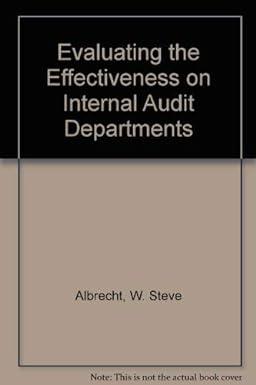Question
TriSwan is a new business that started trading on 1st January 2019. As a trainee financial manager, you have been presented with a summary of
TriSwan is a new business that started trading on 1st January 2019. As a trainee financial manager, you have been presented with a summary of transactions that occurred during the first year of trading. Transaction Details
1 The owners introduced 75,000 of equity, which was paid into a bank account opened in the name of the business
2 Inventories totaling 18,000 were bought for cash
3 A delivery van was bought on 1/1/2019 for 18,000. This is expected to be used in the business for four years and then to be sold for 3,000
4 Premises were rented from 1/1/2019 at an annual rental of 30,000. During the year, rent of 37,500 was paid to the owner of the premises.
5 Inventories totaling 214,500 were bought on credit
6 Cash sales revenue totaled 52,500 (cost of sales 24,000)
7 Sales revenue on credit totaled 228,000 (cost of sales 111,000)
8 Receipts from trade receivables totaled 198,000.
9 Payments of trade payables totaled 181,500.
10 Rates (a tax on business premises) were paid during the year as follows: for period 1/1/2019 to 31/3/2019 - 750; for the period 1/4/2019 to 31/3/2020 - 1,800
11 Wages totaling 49,305 were incurred (wage expense) during the year. At the end of the year, the business owed 945 for the last week of the year
12 Van running expenses paid totaled 9,400
13 The electricity bill for the final quarter was not received before the accounts were prepared. The business estimated the electricity expense would be 500 for the final quarter, resulting in a total estimated electricity expense for the year of 2,475, which was paid in cash. Just before the accounts were finalised, the electricity bill for the final quarter was received for an amount of 625. The supplier will allow TriSwan to pay the balance when the next quarterly payment is due.
The business uses the straight-line method for depreciating non-current assets.
Required: i. Record the transactions using double-entry bookkeeping* and prepare a trial balance. Note (*double entry (t-accounts) workings do not need to be submitted with your assignment.)
Step by Step Solution
There are 3 Steps involved in it
Step: 1

Get Instant Access to Expert-Tailored Solutions
See step-by-step solutions with expert insights and AI powered tools for academic success
Step: 2

Step: 3

Ace Your Homework with AI
Get the answers you need in no time with our AI-driven, step-by-step assistance
Get Started


